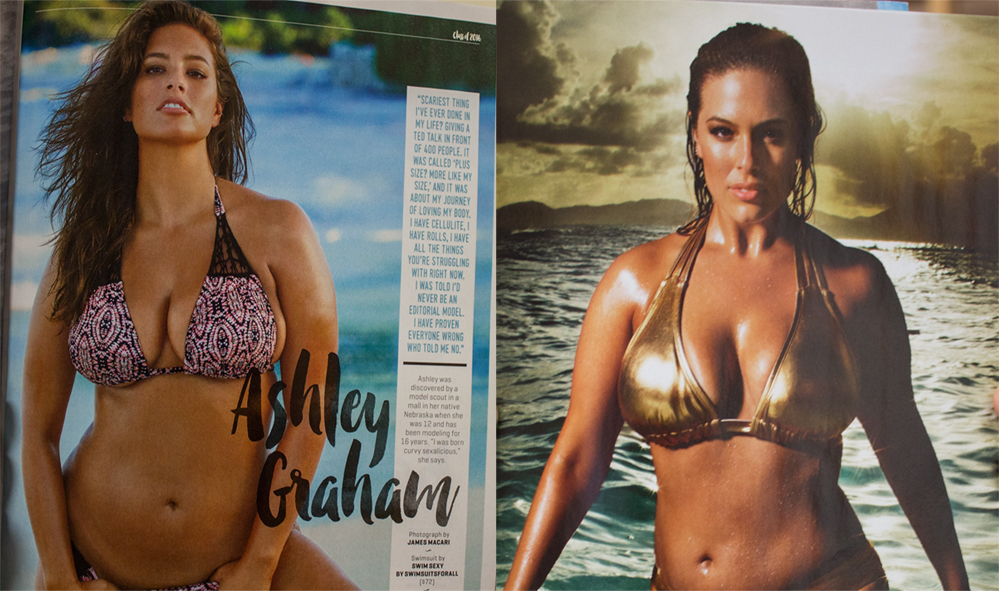Sports Illustrated gets a plus-sized remodeling
In the last couple of years, many publications that encourage healthy lifestyles have sometimes redirected their focus from sharing weight-loss secrets to glamorizing plus-size models, thus encouraging girls and women to embrace their flaws and imperfections.
Recently, Sports Illustrated has been receiving nationwide attention from the release of its annual swimsuit issue. The February issue used three different cover models: Ashley Graham, Ronda Rousey and Hailey Clauson. Graham, the magazine’s first plus-size cover girl, weighs 166 pounds and is a size 14. She is also becoming one of the media’s newest body image advocates.
As a “plus-size” model, Graham presents herself with poise and confidence regardless of her audience. It would be in the best interest of publications such as Sports Illustrated and Glamour magazine to highlight her words and what she represents to the public eye, which is a beautiful woman with the same potential to be a cover model as someone of a smaller size.
In the United States today, an emerging generation is obsessed with playing sports, being in shape, looking healthy and losing weight, which is often the audience that publications such as Sports Illustrated, People and Glamour appeal to. With the help of Sports Illustrated and other companies such as Lane Bryant, Graham has been able to capture the attention of millions of people around the world, especially those who struggle with body image.
Today in the United States, distorted body image is a problem that is often linked with eating disorders. In 2015 the Eating Disorder Hope organization reported that 50 percent of female college students use unhealthy weight control behaviors to control their bodies, and this number only continues to grow.
As a college student who has struggled with an eating disorder throughout my life, I know that media have a heavy influence on perceptions. College can be stressful. We worry about avoiding the freshman 15, making new friends, getting good grades and keeping up with classes. We may not always think about how those worries can impact our mental health. Public advocates like Graham speak about how women should embrace themselves and their abilities. It is important to be influenced by positivity and encouragement.
With the dangers of eating disorders becoming more obvious to society, it may be a sign of progress that some media outlets such as Sports Illustrated<em>Sports Illustrated</em> have started using plus-size, curvy models as campaign tools and positive role models for women. have started using plus-size, curvy models as campaign tools and positive role models for women. Sports Illustrated have started using plus-size, curvy models as campaign tools and positive role models for women.
Mainstream media outlets should expand these efforts to change the way that women are portrayed and recruit more positive body image advocates and role models. Graham is only the beginning of projecting awareness to the public through popular publications and advertisements. Soon, being classified as plus or petite will no longer be a shameful comparison, but instead will be embraced as socially acceptable.







